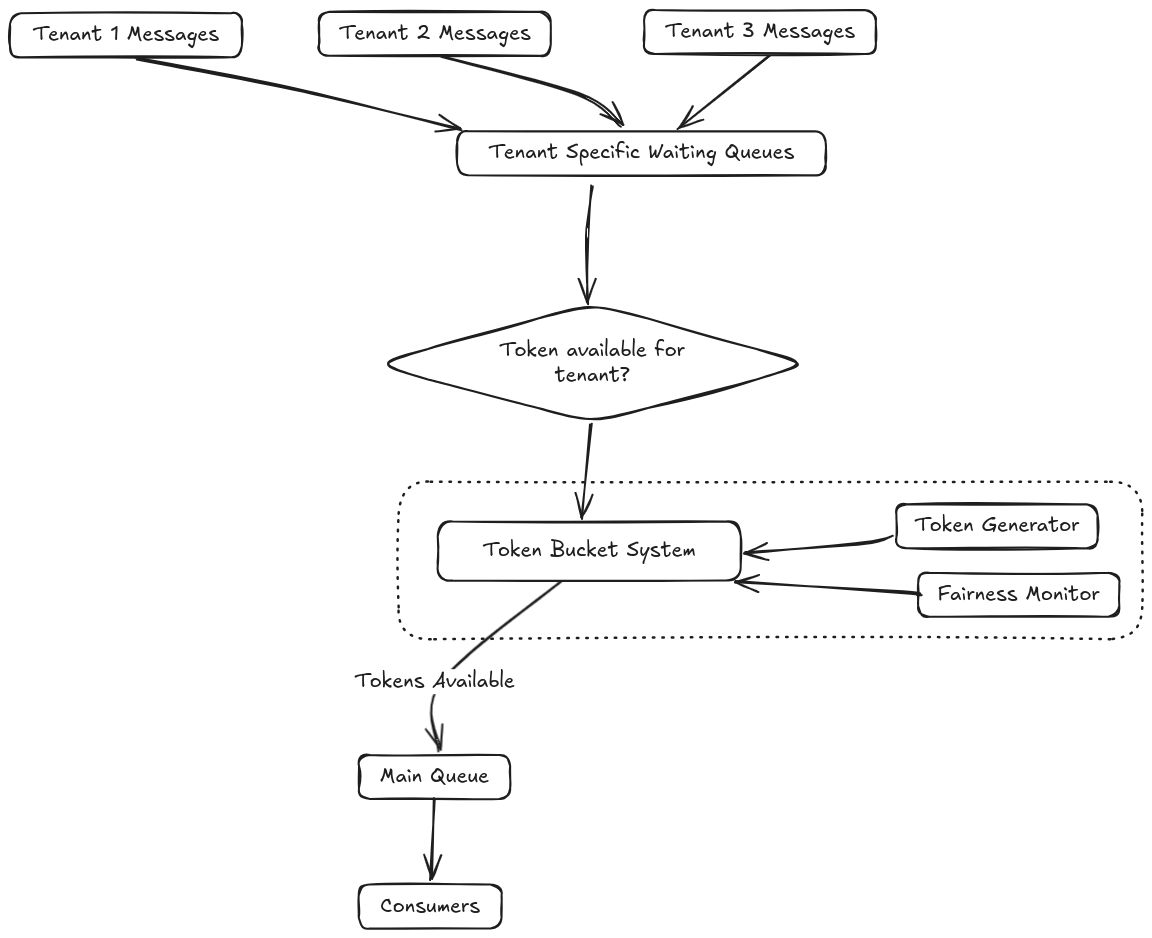𝐔𝐬𝐢𝐧𝐠 𝐓𝐨𝐤𝐞𝐧 𝐁𝐮𝐜𝐤𝐞𝐭 𝐀𝐥𝐠𝐨𝐫𝐢𝐭𝐡𝐦 𝐭𝐨 𝐒𝐨𝐥𝐯𝐞 𝐌𝐞𝐬𝐬𝐚𝐠𝐞 𝐒𝐭𝐚𝐫𝐯𝐚𝐭𝐢𝐨𝐧 𝐢𝐧 𝐌𝐮𝐥𝐭𝐢-𝐓𝐞𝐧𝐚𝐧𝐭 𝐒𝐲𝐬𝐭𝐞𝐦𝐬
In the world of multi-tenant cloud solutions, ensuring fair resource allocation can be challenging. One common issue is message starvation, where high-volume tenants monopolize processing resources, leaving others waiting. Here’s how this can be tackled using the Token Bucket algorithm:
The Token Bucket Approach

- Each tenant gets a “bucket” that fills with tokens at a fixed rate.
- Every message requires a token to be processed.
- No tokens? The message waits its turn.
How it Works
- Tenant-Specific Waiting Queues: Segregate messages per tenant for fairness.
- Token Generator: Adds tokens to buckets at fixed rates.
- Token Bucket System: Fetches messages using tokens; sends to Main Queue.
- Main Queue: Central queue for consumer processing.
- Fairness Monitor: Adjusts token allocation based on queue depths.
Key Benefits
- Prevents high-volume tenants from dominating: Ensures that all tenants have fair access to resources.
- Fair processing across all tenants: Maintains system balance and avoids bottlenecks.
- Allows for burst traffic within limits: Supports short-term spikes in activity.
- Scalable and adaptable: Handles changes in tenant behavior efficiently.
Deep Dive into the Workflow
- Message Arrival: Messages routed to tenant-specific waiting queues.
- Token Check: Tokens available? Fetch message; else, keep waiting.
- Token Bucket System: Ensures only token-based messages are processed.
- Token Generator: Regularly refills buckets to enable processing.
- Fairness Monitor: Dynamically adjusts tokens to prevent monopolization.
- Main Queue: Token-based messages queued for consumers.
- Consumers: Process messages efficiently from the main queue.
